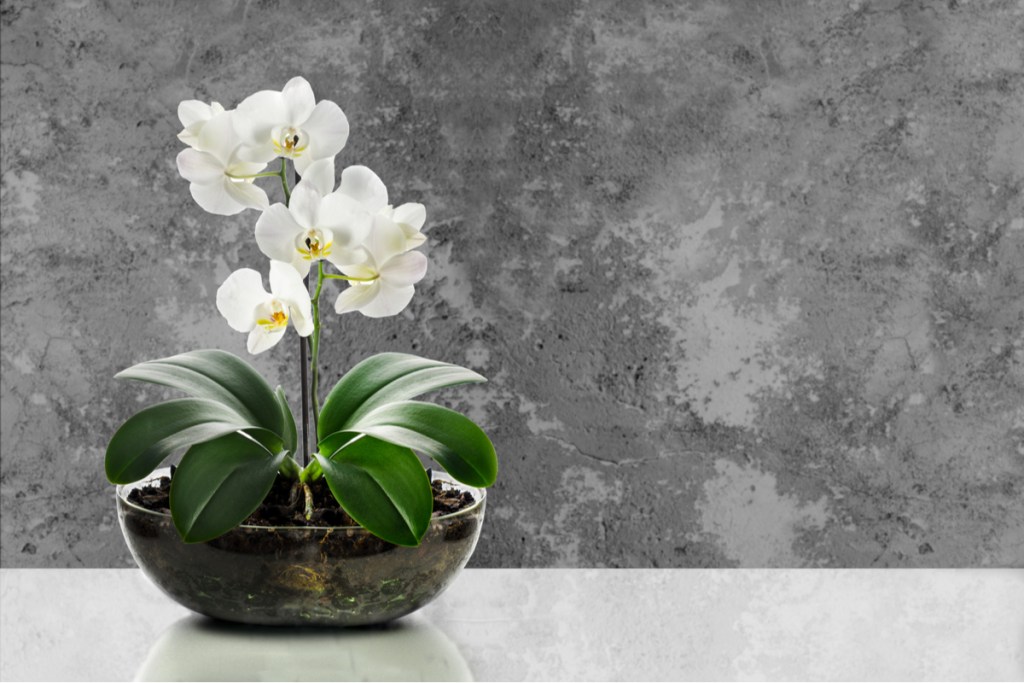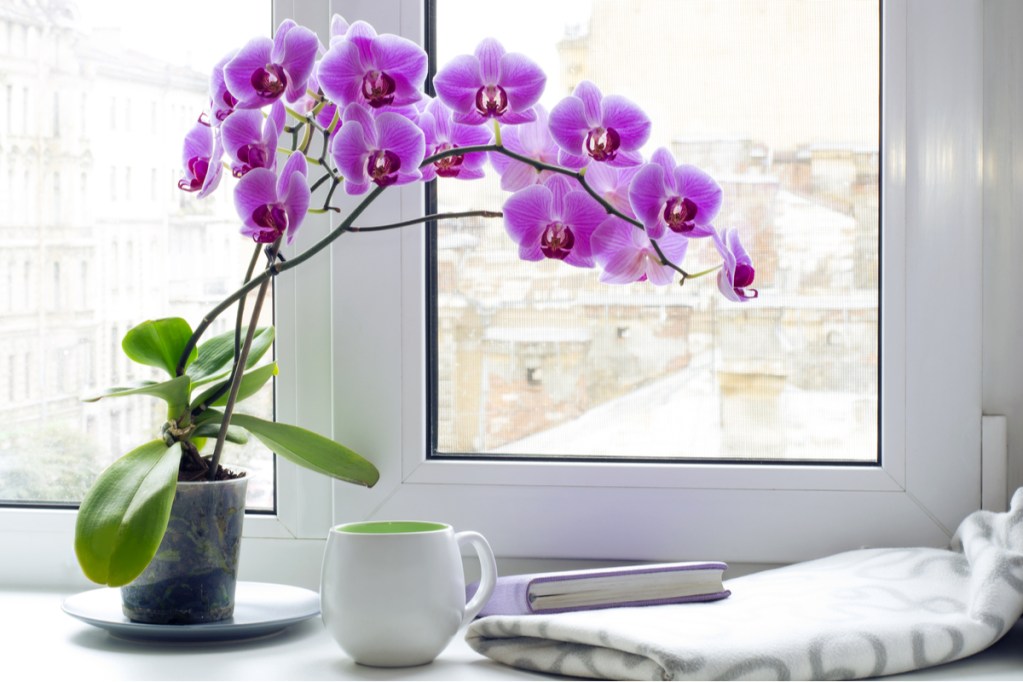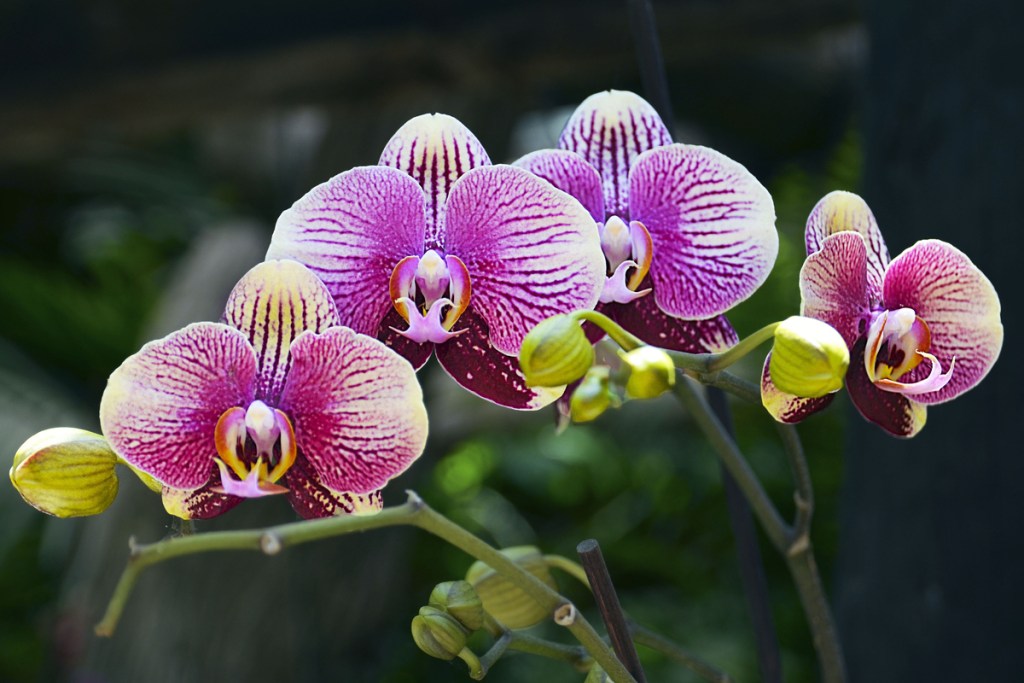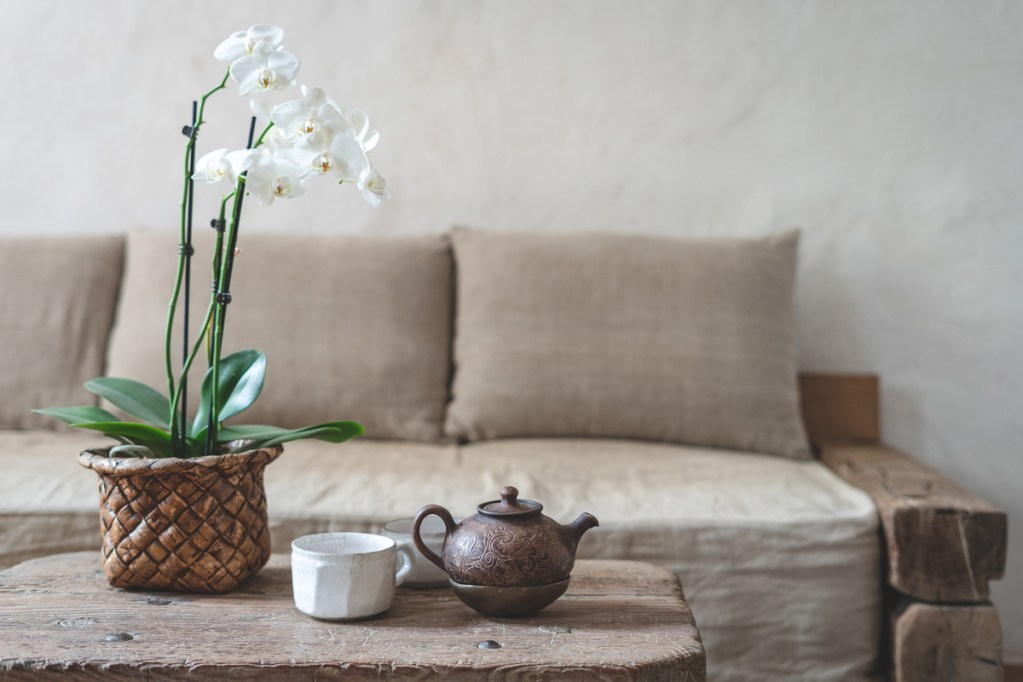Orchids are unique flowering houseplants that are highly sought after by indoor gardeners for their delicate blooms and arching stems. There are roughly 30,000 different species of orchids, but each one can be characterized by the three-petal blooms that grow from the branches; however, they can be a bit tricky to get to bloom. Some people only experience the foliage, and although orchids water well; plant owners may not remember how important proper lighting is to get flowers to grow. Orchid light needs are a bit bigger than most, so let’s get into it.

How much light does an orchid need indoors?
Orchids thrive on strong lighting indoors, which means you need to find a space that isn’t dark for a majority of the day. Because orchids value such strong light levels, it’s important to make sure they have a consistent amount each day when grown indoors. You want to pick a location that has the same amount of day and night, day in and day out, aside from the gradual change of the seasons and the unpredictable cloudy days.
What kind of light does an orchid require?
So what kind of light is strong light? It’s bright, full sunlight; however, orchids don’t like a lot of heat, so you want to avoid areas that get direct afternoon sun (think all the windows in your home that shine the brightest come lunchtime — those are bad for orchids). At a minimum, you want your orchid to get 5 to 6 hours of sunlight per day, but you may still want to avoid directly placing your orchid on windowsills so that the intense light can’t burn the leaves.
Do orchids do well in low light?
Unfortunately, no. An orchid kept in low lighting won’t thrive, and you may start to see the leaves darken and wilt over time because they aren’t receiving enough sun to keep the plant’s energy levels up. If your orchid is in a lower light environment, it’s best to either move it to where it can receive more sunlight or buy a grow light to keep it under so that it can get what it needs.

Where should I put orchids in my house?
South- and west-facing windows are the best places for orchids in the home. Because of the orchid’s light needs, they’ll enjoy the bright, consistent light that comes through these windows — especially in the evening when the sun is setting. Place the orchid on a small table or plant stand nearby instead of directly in the window to help avoid potentially sunburnt leaves.
Orchids make beautiful accent flowers due to their delicate nature. They grow tall instead of out, so you won’t have to worry about them taking over the space and growing to unruly lengths like indoor vine plants. Plus, if you choose to use an individual grow light for your orchid, the number of places you can put it greatly increases. They make gorgeous plants for a dresser or vanity and are even a welcome presence on a home office desk. Locations like this, however, should only be chosen when using a grow light or if your bedroom or office has a south- or west-facing window that receives the required amount of sunlight.
Essentially, this plant can go anywhere as long as the light needs are met! Getting the proper amount of light is essential to helping the plant bloom — which, chances are, is what you’re after.

How to tell if your orchid is getting too much (or too little) light
A happy, light-fulfilled orchid will have bright green leaves growing from the plant — and they’re your best indicator of whether your orchid is getting enough light from day to day. This does, however, require some diligent inspection of your plants at least once a week. You want to keep a close eye on them, especially after just bringing them home or moving them to a new location, to see how they’re adjusting and look for signs of unhappiness.
If you’re worried your orchid isn’t getting the light it needs, you can check for:
- Dark green leaves. These mean that the orchid isn’t receiving enough light and either needs to be moved to a brighter location or be put under a grow light.
- Yellowish-green or red leaves. These both mean that the orchid is getting too much light and needs to be moved to a slightly dimmer location — which could perhaps be as simple as moving it away from directly in front of the window.
Because yellowing leaves can also be an indicator of overwatering and root rot, you should also feel the leaves if you’re concerned about the lighting. When an orchid gets too much light, the leaves will feel noticeably warmer than the air around it. If they don’t, then chances are your orchid is suffering from root rot and not intense lighting.

Tips for making sure your orchid gets enough light
To make sure your orchid gets enough light, you want to pay attention to how the sun moves throughout your home during the day. Keep track of what areas stay brighter longer and if it’s feasible to put a plant in there or if you’d need to bring home a little plant stand for your orchid to sit on. Keep them out of windows and direct sun to avoid high-intensity light, and when you see those bright green leaves, you know your orchid is in a happy home.
Editors' Recommendations
- Stunning Monstera plants that you should add to your indoor plant collection
- Beyond basil and cilantro, add these unique plants to your indoor herb garden
- 5 easy-care spider plant varieties perfect for any home garden
- Easy hoya plants to add to your indoor plant collection
- Do ZZ plants cause cancer? Here’s the definitive answer



